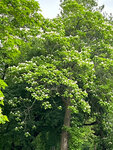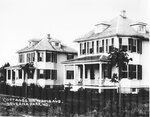Clear, 76°
Wind: mph,


Caterpillar trees, Indian bean trees, cigar trees — catalpa trees have many nicknames, but to many Severna Park residents, they may be a nameless accessory that has adorned the local landscape for more than 100 years.
Severna Park developer Oscar Hatton enlisted the help of a 12-year-old boy, George White, to beautify the area around 1908. Long before White was the pastor of Mount Tabor United Methodist Church in Crownsville, before he planted corn by Benfield Road and cut railroad ties for the old Baltimore Annapolis Railroad, he was Hatton’s helper.
“He and Oscar Hatton went all through Severna Park, planting maple, oak, white pine and catalpa trees,” said Severna Park historian F. Scott Jay.
Native to Illinois and Indiana, Arkansas and Tennessee, these trees with their heart-shaped leaves were not abundant in Anne Arundel County. Today, more than 40 catalpa trees remain on Evergreen Road and Maple Avenue near Severn School. They form a canopy over the road, creating a tunnel effect.
Each June, they bloom with a fragrant white flower. Later during the summer, bean pods form.
In the 1950s, Jay and his teenage friends learned how the catalpas got one nickname, the cigar tree.
“When they dried out, we used to smoke them. They were horrible,” Jay said. “It just ripped through your throat. It was worse than any cigarette I ever had.”
For more than a century, the plants have been a defining feature in the heart of Severna Park. Jay does not want them to be forgotten.
“Maybe we should be thinking about the next generation of catalpa trees,” he said.
Comments
No comments on this item Please log in to comment by clicking here